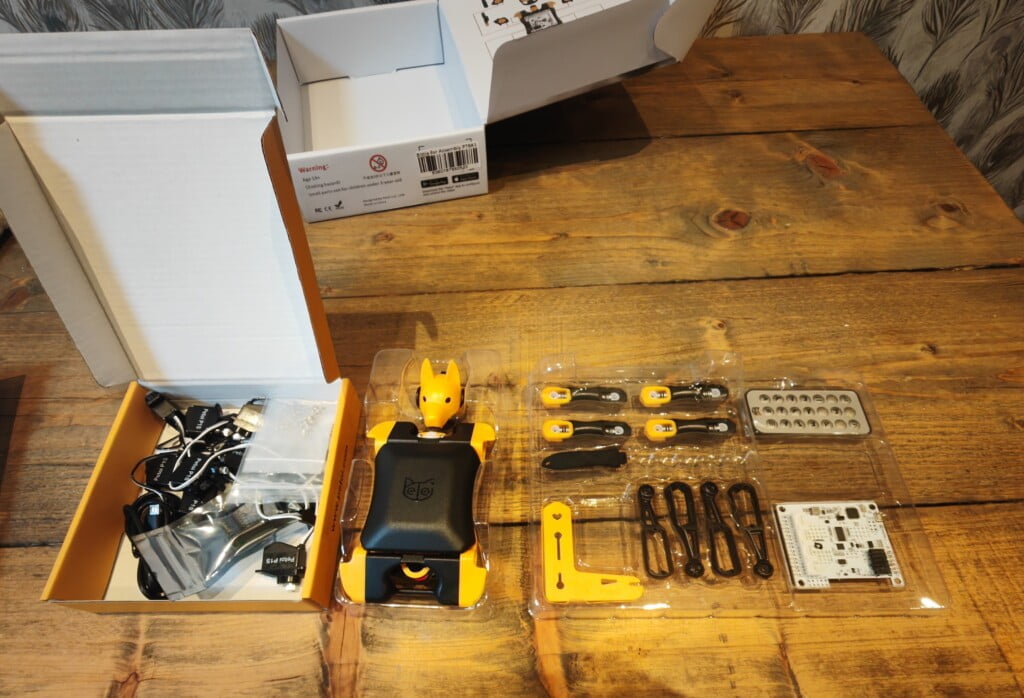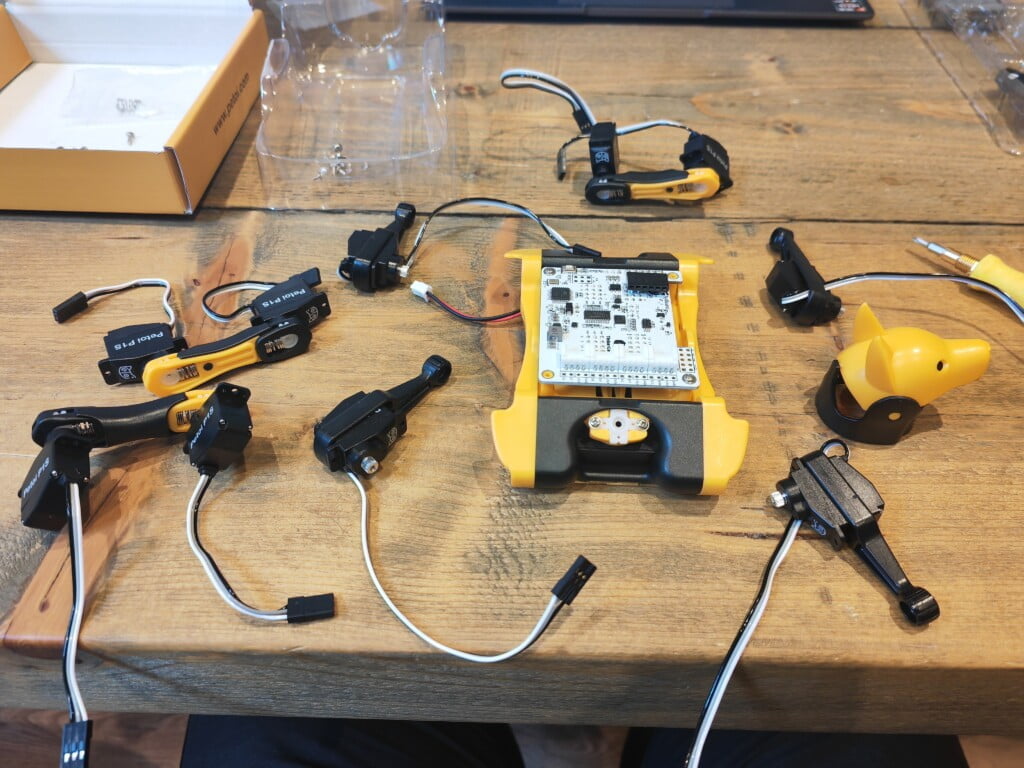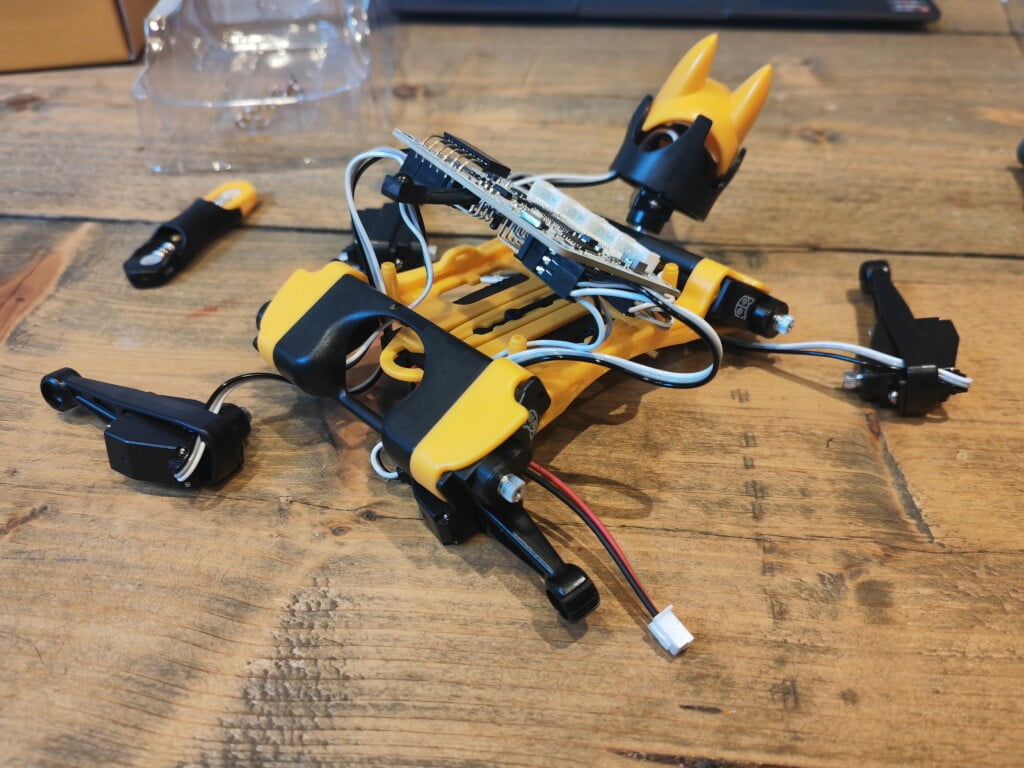Sharing is caring!
Petoi Bittle Robot Dog Review Rating
generalize
Petoi Bittle is an excellent project for anyone with a special interest in robotics and programming. It’s more advanced than competing STEM robots with a steeper learning curve, but I think it has the potential to be a more rewarding experience.
When I was a kid, the internet as we know it didn’t exist, and the most fun STEM project I’ve ever had was learning BASIC programming on the BBC Micro.
I think it’s amazing how kids today have access to such a wide range of interesting learning resources.
Petoi Bittle is a robotic dog that can be assembled either pre-assembled or as part of the learning process.
It uses Arduino to control all servos and teaches you how to upload their basic configuration using Arduino IDE. From here you can then program the robot using CodeCraft (scratch based) or via C/C++/Python.
assembly

I received the Bittle in disassembled form because I thought building it would be part of the fun. There is an online video to guide you through the build process. It’s easy and I did it in over 30 minutes.

My kit arrived differently than advertised. It looks like Petoi simplifies things a bit by pre-assembling the body and legs. Looking at the online guides, I’m glad they did, as the legs seem tedious to assemble and not particularly pleasant.
So my kit mostly connects all cables and servos.

programming
A little embarrassingly, when it came to the initial calibration and programming of the Bittle, I found things to get even more confusing, especially considering I have a degree in computing. In my defense, I haven’t done anything like this in over 10 years.
I think the main problem I have is that the whole written document is not as simple as I would like it to be.
Similar to the original build, having some supporting videos does seem to help a lot.
You must install the Arduino IDE and then install the various libraries available in Arduino. Then you need to comment out some of the libraries for IRremote because Bittle doesn’t have enough storage space.
Then you need to install other libraries and OpenCat code from Github. Finally, you need to use the upload board to connect the Bittle to the PC and set up the various ports so you can start uploading.
I think my main problem is that it doesn’t seem friendly to people with limited experience with all the software you use. While the instructions are developed step by step, it’s not always clear what I’m doing.
Using videos and forums, I finally got there. I’ve only done the basic setup so far, but I plan to keep using it and see what else I can program it to do.
Since this is for children over 14, I thought it could be supplemented with better supporting documentation. Although your average age of 14 probably has more up-to-date programming experience than I do.
As far as programming is concerned, you can use C/C++, or you can use CodeCraft with a draft-based mobile app to simplify things.
Additional sensors
You can extend the functionality of Bittle with additional hardware. The main one is the smart camera module, which can be used for smart object detection.
Under the Extensible Modules document, there are many more compatible models that can be clipped to Bittle’s head.
Some examples include:
- sound sensor
- light sensor
- touch sensor
- PIR sensor
- OLED display
The documentation also covers installing the Raspberry Pi. Pi 3A+ can be used as main controller
Price and Alternatives
The Petoi Bittle is currently $279, down from $329 if you buy it outright. In the UK it’s £299.99 on Amazon, or £10 more if you want it pre-installed.
Smart camera models cost an extra £60.
There’s also the Nybble Doraemon, which uses wooden parts instead of plastic for $237
There are many types of STEM robots for children and adults.
This Anki vector Cozmo is a particularly cute but pricey AI robot. The new Cozmo 2.0 is so popular that it has orders until the third quarter of 2022.
There are also Clicbots for adults and children over the age of 8.
This Freenove Big Hexapod Robot Kit Probably one of the best alternatives for more advanced projects. This would require a Raspberry Pi, which is currently difficult to obtain and adds significantly to the cost.
Looking at the various alternatives, I’d say Petoi Bittle is more advanced. It will be harder to learn, but it should teach more practical programming to teens (and adults) as it covers C/C++ and python.
comprehensive
Overall, I think Petoi Bittle is an excellent project for anyone with a particular interest in robotics and programming. It’s more advanced than competing STEM robots with a steeper learning curve, but I think it has the potential to be a more rewarding experience.
At £300, it does feel expensive, but if I have a kid and it helps them get into programming, I’d say it’s worth it.
Last updated on June 19, 2022 / Affiliate Links / Image from Amazon Product Advertising API
